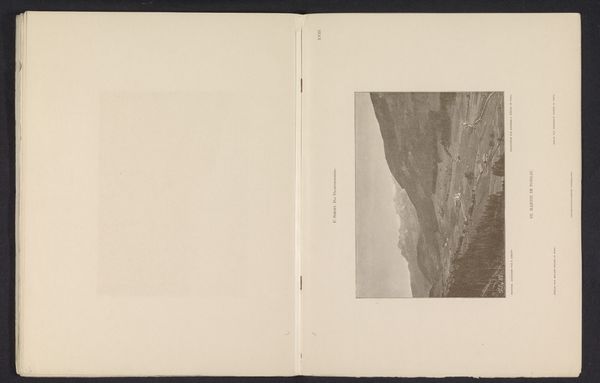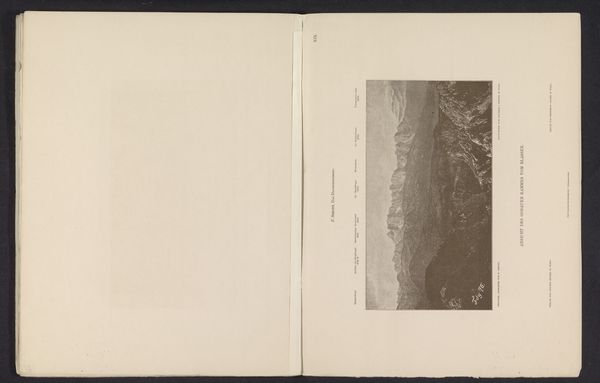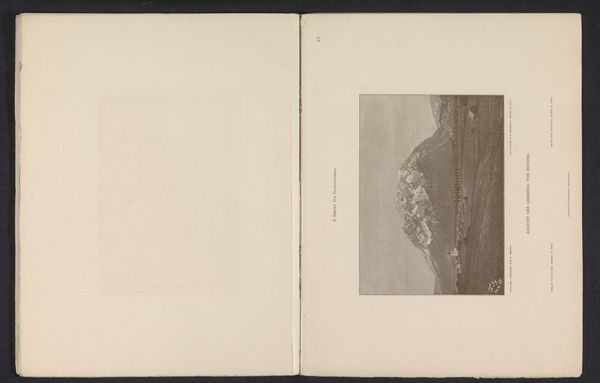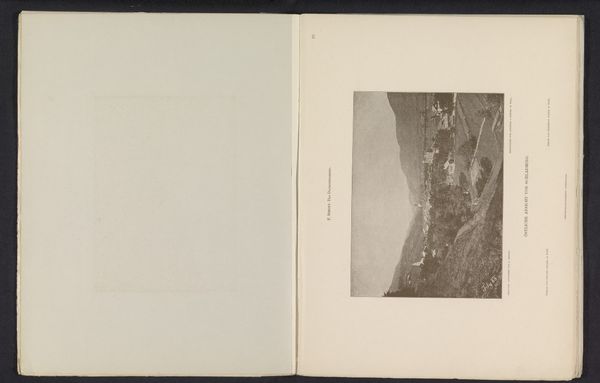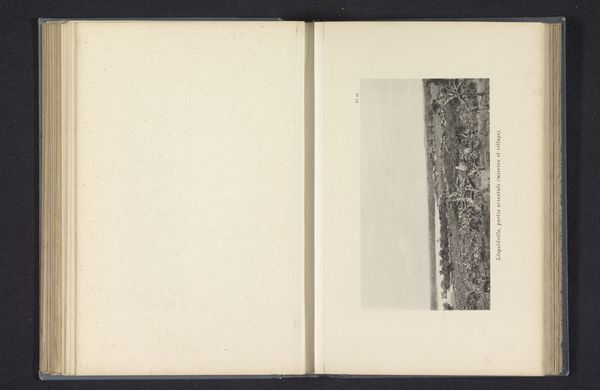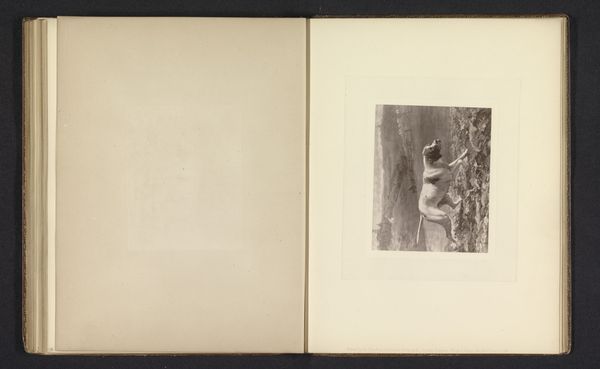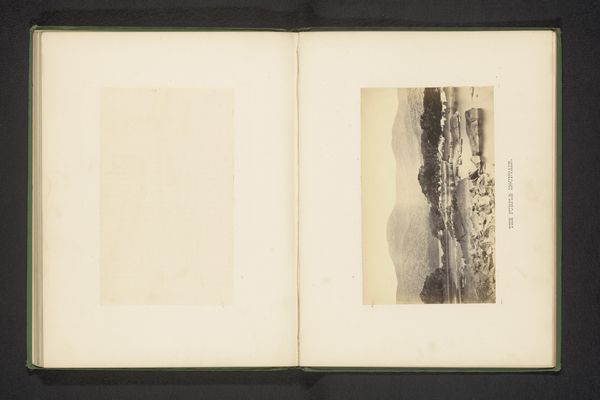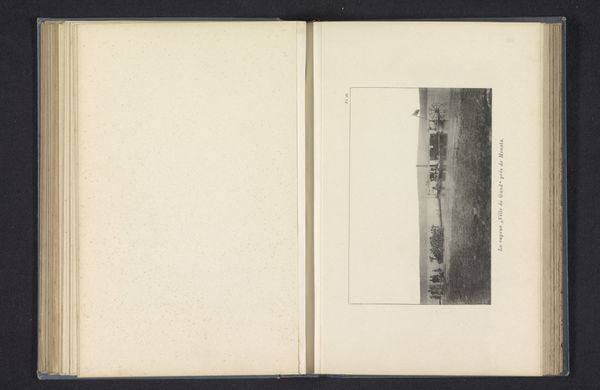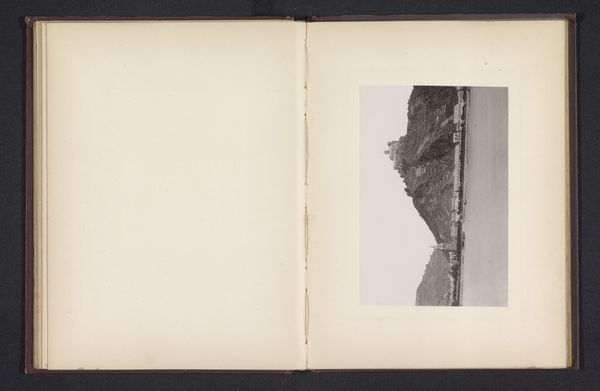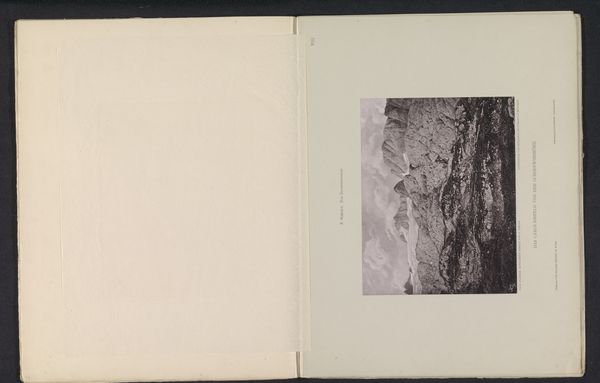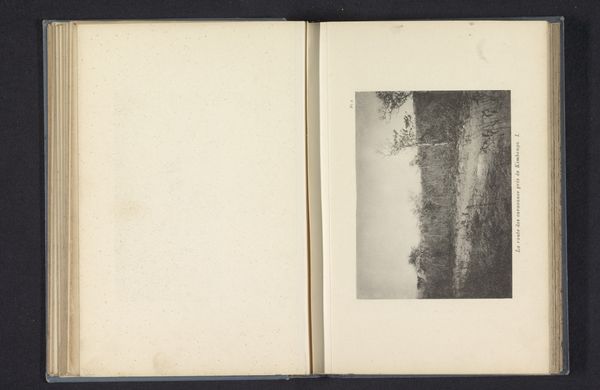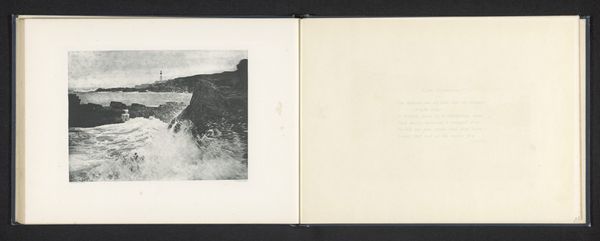
print, photography, gelatin-silver-print
#
aged paper
#
homemade paper
#
script typography
# print
#
hand drawn type
#
landscape
#
photography
#
personal sketchbook
#
hand-drawn typeface
#
gelatin-silver-print
#
thick font
#
sketchbook drawing
#
handwritten font
#
delicate typography
Dimensions: height 142 mm, width 191 mm
Copyright: Rijks Museum: Open Domain
Curator: This is Friedrich Simony's "Gezicht op Flachau," likely created around 1888, using the gelatin silver print method. It seems to come from a personal sketchbook. Editor: It feels like a study, or a quick impression captured in monochrome. I notice the texture of the paper and the delicate typography beside the landscape; they feel integral to the work itself, almost like part of the scene. Curator: Exactly. Simony, being deeply invested in landscape art, possibly intended it to function didactically within certain geographical societies, or perhaps for a publication promoting the picturesque qualities of the Austrian landscape, thus encouraging tourism, a rapidly growing phenomenon at that time. Editor: Yes, there’s that push for popular consumption embedded in it. Gelatin silver prints were very common at the time, which is reflected by how its circulation transformed how the world was seen; its reproduction democratizes the image. What’s fascinating to me is how the act of capturing the photograph, developing the gelatin print, and inserting it into a sketchbook – this all encompasses physical labor. This challenges our understanding about how fine art and photography intersect as crafts, instead of belonging in discrete hierarchical classes. Curator: Absolutely, it encourages that broader perspective on how materials and modes of production play into artistic creation and broader socioeconomic structures. The aesthetic value merges with social processes. Editor: It's thought-provoking to consider its contemporary relevance, reflecting back upon the labor inherent in all practices and calling for social accessibility of art. Curator: Indeed, its historical context invites ongoing conversations regarding artistic expression, societal structures, and the enduring relevance to contemporary artistic discourse. Editor: Definitely something to think about further. Curator: Certainly.
Comments
No comments
Be the first to comment and join the conversation on the ultimate creative platform.
